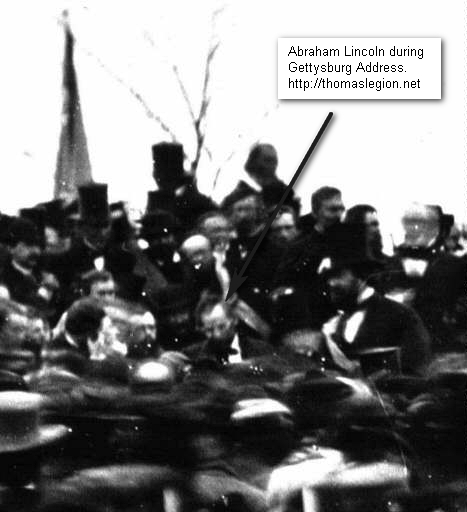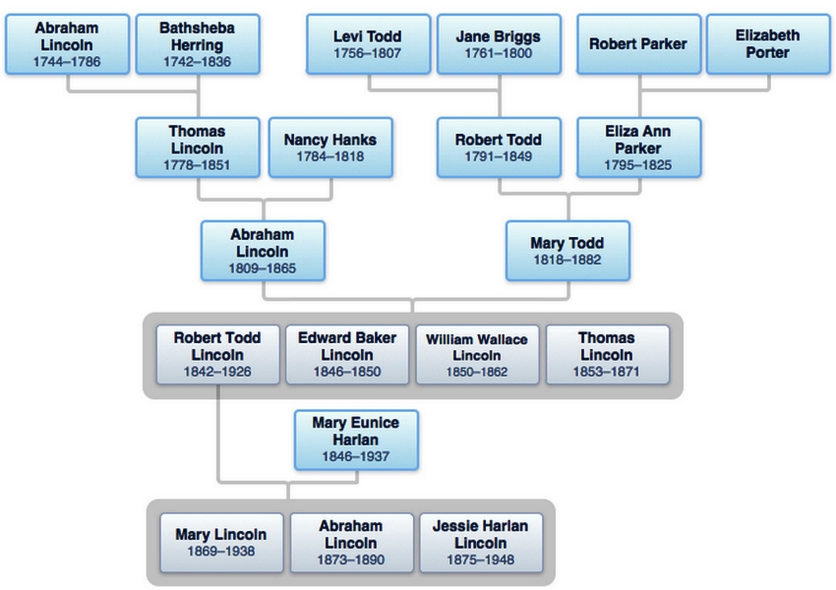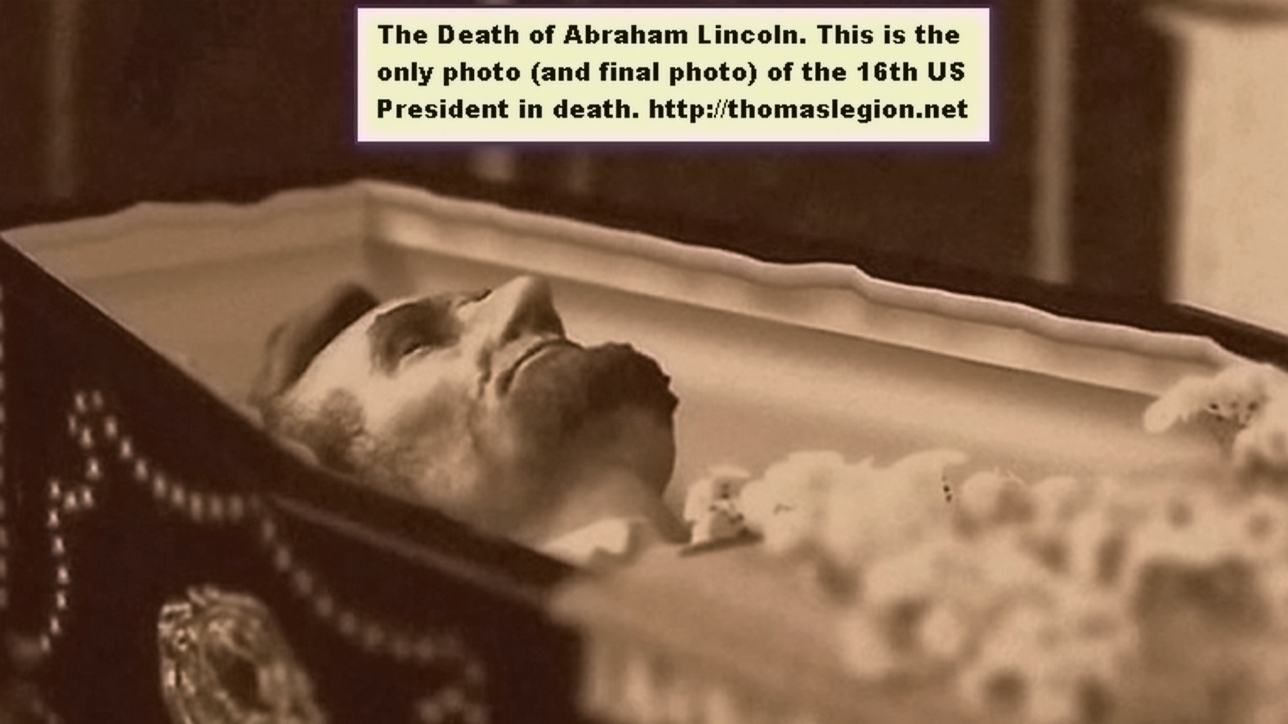
|

|
| Abraham Lincoln at Gettysburg |

|
| Abraham Lincoln just three hours before delivering his Gettysburg Address |
Introduction
While Abraham Lincoln is rarely discussed in the context of his birthplace and early years,
those formative years, whilst in Kentucky, his beloved Mary is often connected with the Bluegrass State and associated
with her cousin, John C. Breckinridge, the highest ranking public official to ever commit treason against the United States.
But in the following summary, most will focus on two events: President Abraham Lincoln's Gettysburg Address and his untimely
death at the hands of cold, calculated assassin. But it is my hope that as you view the photos and read the summaries,
that you will also recall the words of Lincoln himself: "In the end, it's not the years in your life that count. It's the
life in your years."
Here are the two rarest photos, with their histories, of
President Abraham Lincoln: one is of Lincoln at Gettysburg just three hours before making his Gettysburg Address, and the
other is of the President slain and in a casket. The latter photo, along with all photos of the President murdered by
an assassin's bullet, was ordered to be destroyed immediately, but in an odd twist of history, the Secretary of War, who
issued the directive, held secretly to his own photo of the tragedy, because it would surface nearly one century
later while tucked inside of a book at what is considered an ordinary community library.
Abraham Lincoln was of the people, by the people, and for the people, so it is befitting that
his rarest of photos was resting, though never hidden, in plain sight, in the midst of people and in the center
of a community.
Summary
Abraham Lincoln was born on Sunday, February 12, 1809, in a log cabin on
his father's farm in what was at that time Hardin County (today Larue County) Kentucky. His parents were Thomas Lincoln and
Nancy Hanks Lincoln. He had an older sister, Sarah. In 1816, when Abraham was 7 years old, his parents moved to Perry County
(later part of Spencer County) in southern Indiana, where his father bought land directly from the federal government. There,
as Lincoln later described his life, he was "raised to farm work." His mother died in 1818, and his sister Sarah in childbirth
in 1828. From here, Lincoln first traveled on a flatboat to New Orleans.
(Right) Abraham Lincoln, center, at
the dedication of the Soldiers' National Cemetery in Gettysburg, Pennsylvania, on November 19, 1863. Made from the original
glass plate negative at the National Archives which had lain unidentified for fifty-five years until 1952 when Josephine Cobb
recognized Lincoln in the image. To Lincoln's right is bodyguard Ward Hill Lamon, while to his far left is Governor Andrew
G. Curtin of Pennsylvania. The photograph is estimated to have been taken at about noontime, just after Lincoln arrived, before
Edward Everett's arrival and about three hours before Lincoln gave his famous Gettysburg Address. While there are only two
known portraits of Lincoln at Gettysburg on this occasion, there remains only one photo of the President being dead
and in his casket.
In 1830, when Abraham Lincoln was
21 years old, he migrated with his father and stepmother (Sarah Bush Johnston Lincoln) and her children to Macon County, Illinois.
After the discouragingly hard winter of 1830-31, the Lincolns started to return to Indiana, but stopped in Coles County, Illinois,
where Abraham's parents lived out the rest of their lives.
In the spring of 1831, Lincoln left his parents to
try to find his own way in life. He was again hired to take a flatboat of produce to New Orleans. After returning to Illinois
from this successful journey, he settled in the small village of New Salem, where he had mixed success in a variety of callings.
He had a partnership in a store-which failed, he served in the militia during the Black Hawk war, he was Postmaster, learned
and practiced surveying, and considered being a blacksmith. Already in 1832, he first ran for a seat in the state legislature.
He lost, but two years later, was successful, and was again in 1836. At the time of the 1834 campaign, he was encouraged to
study law. In March of 1837, he was enrolled as an attorney, and that April, he moved to Springfield to begin his law practice.
| Abraham Lincoln family tree |

|
| Abraham Lincoln family tree and genealogy chart |
While living in Springfield, Abraham Lincoln made the acquaintance of many
people in different walks of life. Some of these people were to become his allies - and some his opponents - in political
activities and in his work as a lawyer. In the years that he was getting established, Lincoln also met an attractive young
woman named Mary Todd. They had many interests in common that brought them together and in 1842 they were married. Within
the next year their first son, Robert, was born.
In 1844, Abraham purchased and took up residence with his family
in the house on the corner of Eighth and Jackson Streets. This was to be the only home he and his wife ever owned. Here the
Lincolns had three more sons - Edward (Eddie), William (Willie), and Thomas (Tad). Their second son, Edward, died near the
age of four in their Springfield home. When Lincoln was elected sixteenth President of the United States in 1860, the oldest
boy, Robert, was away at college, while the other two, Willie and Tad, were still living with their parents. Lincoln was a
loving and indulgent father and Mrs. Lincoln later wrote of him: "Mr. Lincoln was the kindest man and most loving husband
and father in the world. He was very - exceedingly indulgent to his children. Chided or praised them for what they did - their
acts, etc. He always said It is my pleasure that my children are free, happy and unrestrained by parental tyranny. Love is
the chain whereby to bind a child to its parents.'"
On the morning of February 11, 1861, Lincoln was making his final preparations
to depart from Springfield and to begin his fateful journey to the White House in Washington, D.C. The sky was full of low
clouds and drizzling rain as he went to the train depot. There were about a thousand people gathered at the depot to see him
off. They called for a speech and Lincoln made a brief address to the residents of Springfield from the rear platform of the
train. Then the train pulled away and Lincoln left the place that had been his home for nearly 25 years. He was leaving Springfield
to face formidable difficulties as President during the turbulent years of the Civil War.
| Only photo of Abraham Lincoln dead |

|
| Abraham Lincoln was soon en route to his home state for interment. |
Weapons referred to as small arms and firearms killed more soldiers than
all other Civil War weapons combined. Although the Civil War witnessed the first use of photography in combat, most of
the war's photos were not released immediately for circulation. While many of the photographs of the dead were not released
until 40 years after the war, innumerable photos were discarded because many Americans merely wanted to put any and all
thoughts of the carnage of war behind them. The war killed 2% of the total US population, 620,000 Americans, and every community
was scathed in some manner. Today, many read and study the conflict from history books and websites, but at the time, they
endured the unimaginable, the unthinkable, and it was personal and up close. Present-day, however, occasionally a Civil War
era photo is discovered and displayed allowing more insight into the war and the art of photography. One such photo discovered was of
President Abraham Lincoln in a casket. While at the Illinois State Historical Library in 1952, a 14-year old boy was
reading an old book and he found an envelope tucked between the pages that contained a photograph of President Abraham Lincoln
in his coffin on April 24, 1865. The discovery startled historians, because Edwin M. Stanton, Lincoln's Secretary of War,
had ordered this photograph to be destroyed. Stranger yet, the only surviving print remained with Stanton, whose son preserved
it. It is also believed that the majority of the Civil War photos that exist have never been circulated. Perhaps many
of the elusive photos are sandwiched between the pages of grandma's old bible on a bookshelf, in a dust covered chest
or box in the attic or storage facility, and in an old book in your community library.
Sources: National Park Service; Library of Congress; National Archives.
Return to American Civil War Homepage

|

|

|

